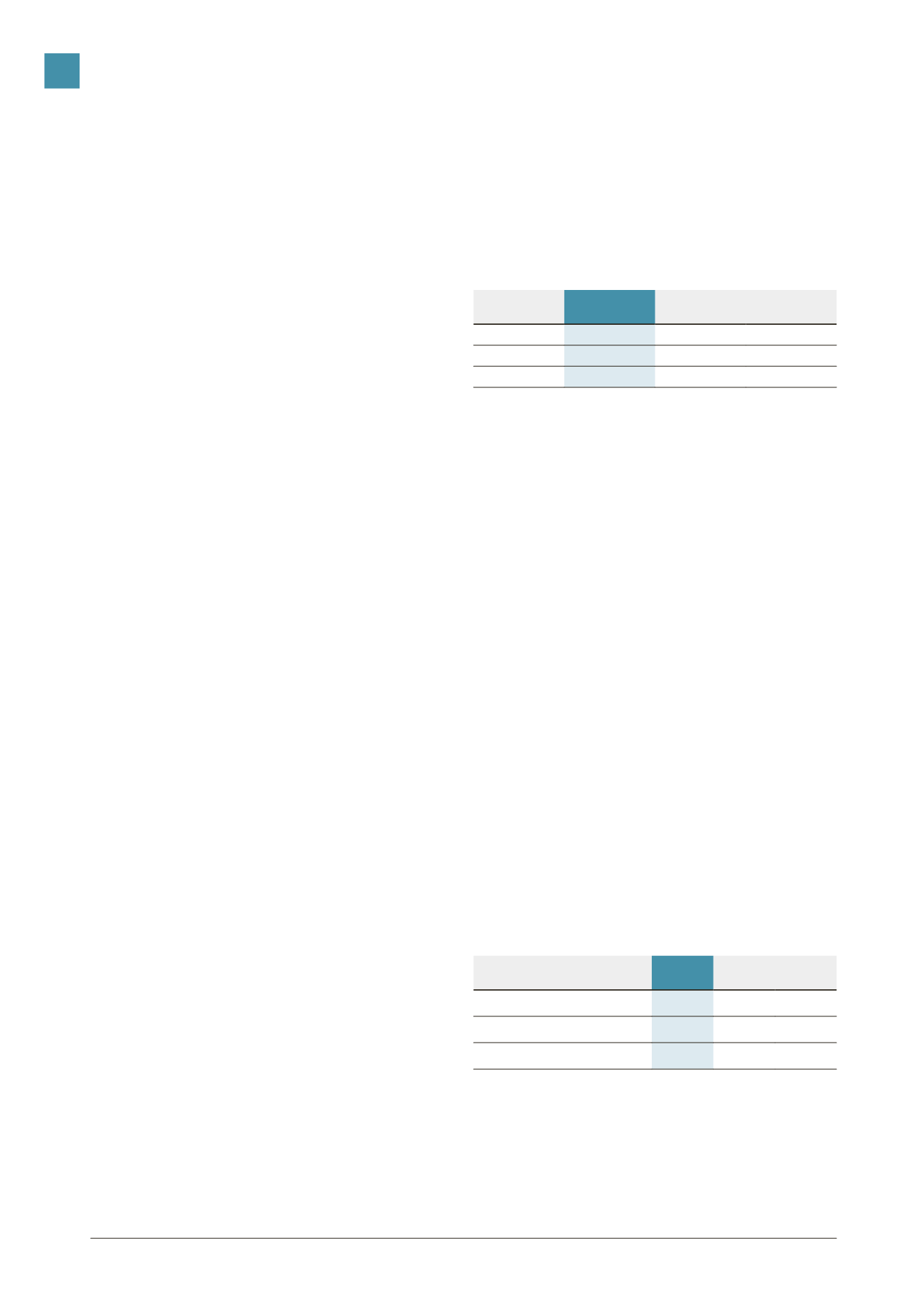

90
LISI 2016 FINANCIAL REPORT
proceedings (including any proceedings of which the Group is aware,
which is pending or of which it is threatened) are to be reported that
may have or have recently had significant effects on the Group’s
financial situation or profitability. The amount of provisions for legal
risks found at December 31, 2016 is not material.
2.5
I
IT-RELATED RISKS
For each of its divisions, the Group has identified an IT safeguard
action plan likely to be implemented in the event of a serious
failure. In addition, the Group has insured risks of interruptions and
malfunctions, or forced use, of its IT systems with a specific policy.
2.6
I
OTHER RISKS
2.6.1
I
Raw materials risks
The LISI Group is potentially exposed to changes in the costs of the raw
materials (steel, alloys, plastics, aluminum, and titanium) used in the
course of its business activities. Nevertheless, the Group estimates
that such price increases are unlikely to impact negatively on its profit
margins. Indeed, some commercial contracts include price-revision
formulae which allow selling prices to be varied in accordance with
changes to raw material costs. Suppliers work to limited time frames
based on guaranteed-price contacts. At December 31, 2016, the LISI
Group used financial instruments to manage its future exposure
to changes in the price of Nickel. The amounts hedged are not
significant. It can also benefit from agreements with suppliers to
hedge against annual or multi-year periods to limit the impact of
fluctuations in certain ore prices.
2.6.2
I
Energy-related risks
To cover its energy costs, the Group entered into a supply contract
with electricity company EDF for its French sites (due to expire in
2017). For foreign sites, similar contracts have also been entered into,
particularly in Germany and the UK.
2.6.3
I
Commercial risks
For the record, the Group manufactures thousands of different items
using various raw materials (steels, alloys, aluminum, various plastics,
titanium, etc.) and employing a wide range of technologies (cold and
hot forging, forming, machining, die trimming and stamping, plastic
injection, heat and surface treatment). Business risk, representing
the risk of loss of contracts related to a product, is thus spread over a
considerable number of products manufactured in the Group’s 44 global
sites. The main product families are developed in collaboration with
customers, and the proportion of sales revenue from patented products
plays only a secondary role in total consolidated sales.
2.6.4
I
Customer-related risks
Looking at the figures for 2016, only three clients accounted for
more than 5% of the LISI Group’s consolidated sales. The 10 leading
customers account for 52% of all sales; this list includes the customer
accounts of the 3 divisions, LISI AEROSPACE, LISI AUTOMOTIVE and
LISI MEDICAL. 55 customers account for 80% of sales. Figures for our
three largest customers have evolved as follows:
2016
2015
2014
Customer A
17.1%
15.0%
15.8%
Customer B
6.1%
8.0%
6.4%
Customer C
5.9%
5.5%
5.2%
2.6.5
I
Product-related risks
The LISI Group is exposed to the risk of actions for liability or to
enforce a guarantee by its customers regarding products sold. It is
also subject to liability actions in the event of product fault leading to
injury or damages. To protect itself against such risks, as described
in paragraph 3 below, the LISI Group has third party liability cover for
use of its products after delivery. The LISI Group’s liability is often
limited to compliance with the original product specifications or
customer-defined specifications; it cannot be extended to the ways
in which products are used. However, it is possible that the insurance
policy taken out may not be sufficient to cover every possible financial
consequence linked to such claims, particularly In the USA. This is
why the LISI AEROSPACE division has set up an additional provision
for product liability in the amount of 1% of the “Fasteners” division’s
sales revenue.
2.6.6
I
Supplier-related risks
As a general rule and in view of the nature of its manufacturing activities,
the Company does not rely exclusively on any one supplier or strategic
subcontractor. The Group’s main suppliers are those that provide it with
rawmaterials. Outsourcing is confined mainly to technical applications,
primarily specific heat treatment and finishing operations (surface
treatment and assembly), since most of the Group’s activities are
integrated. For 2016, the various operations outsourced by the Group’s
sites represented approximately 6.9% of consolidated sales revenue.
The volume distribution of the main suppliers is as follows:
2016
2015
2014
First supplier
5.1% 6.6% 3.1%
First five suppliers
15.1% 15.0% 11.8%
First ten suppliers
20.6% 20.6% 16.9%
Risk factors
5


















